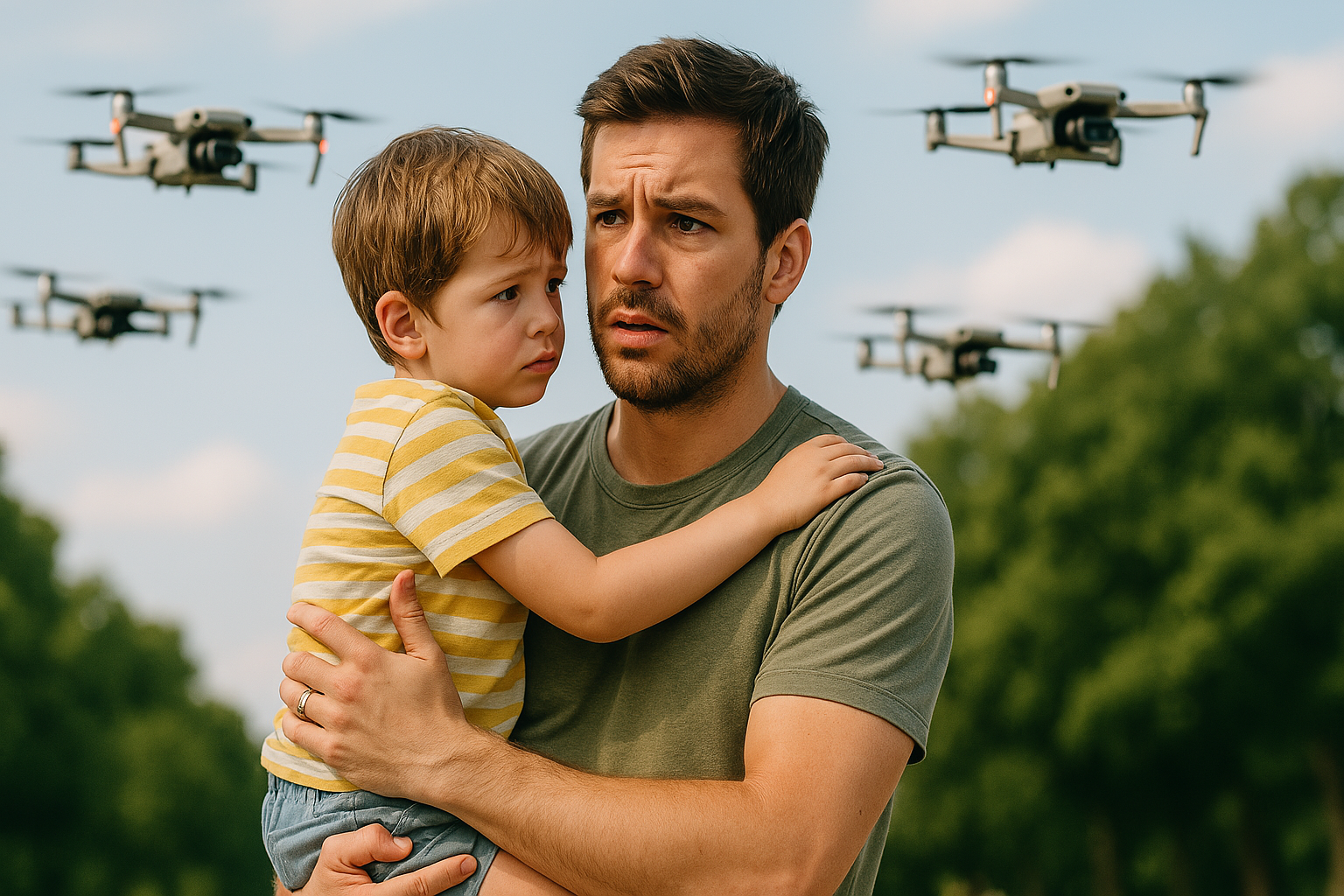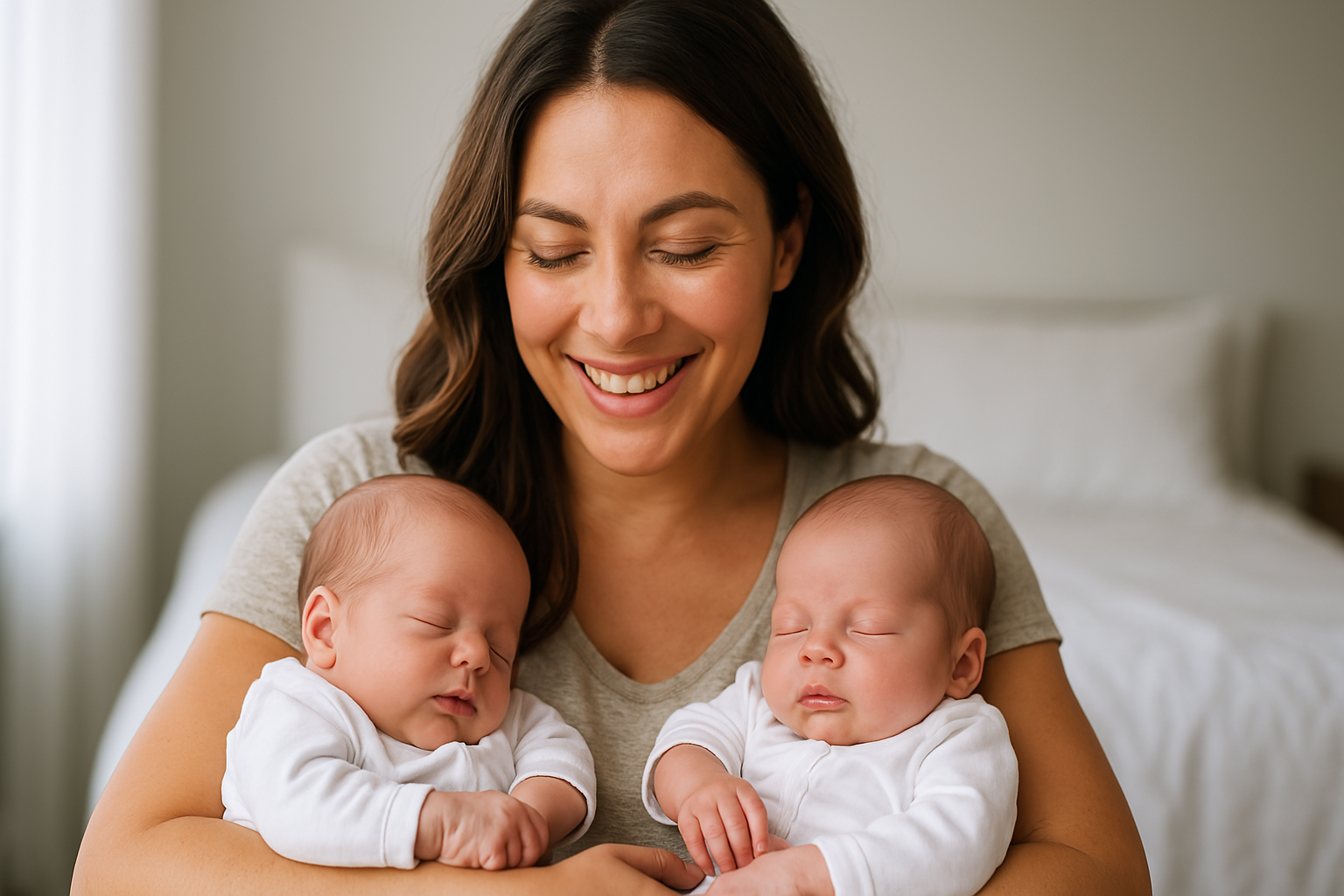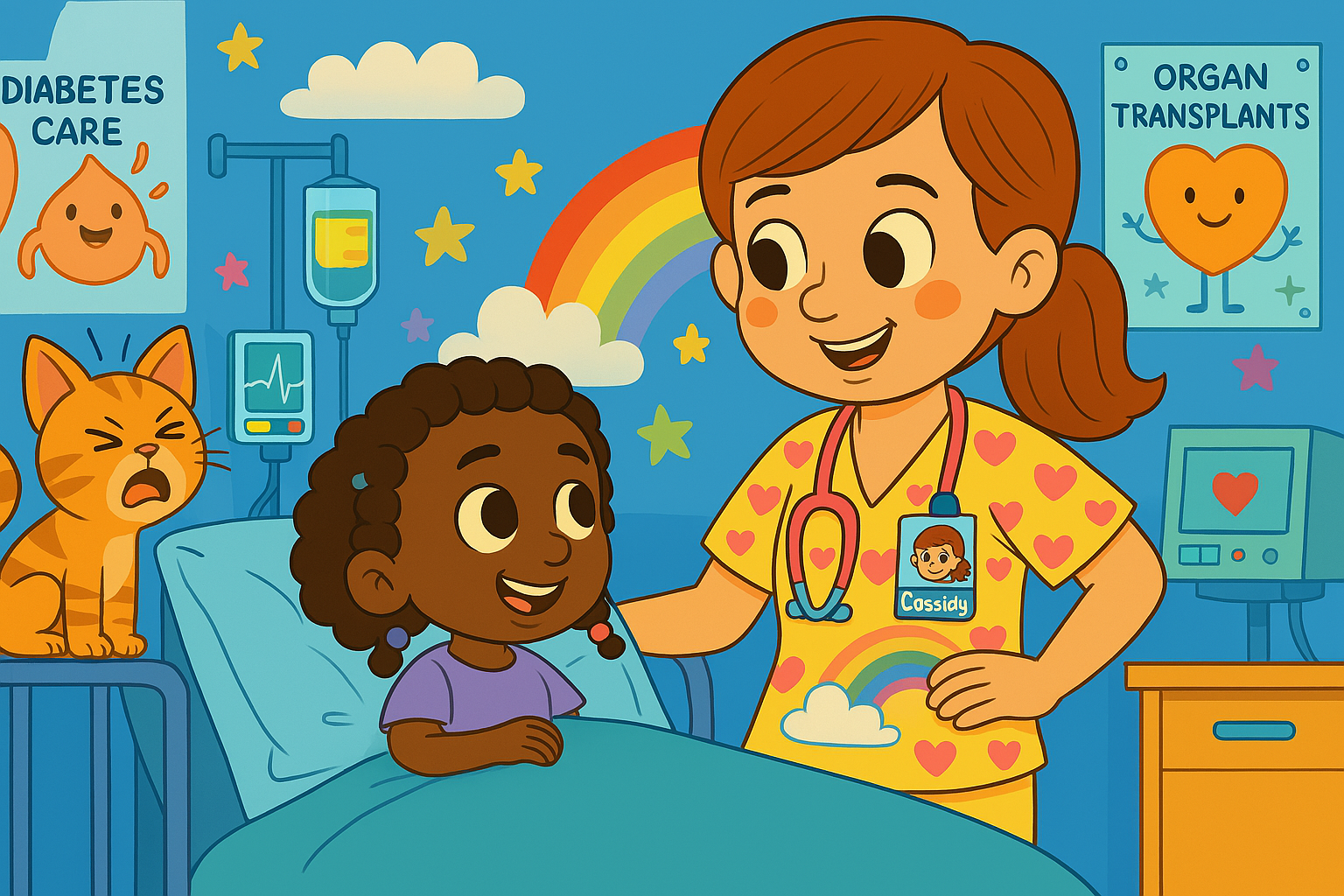The Importance of the Diabetes Community
This is the second in a series of five pieces that I wrote for Omnipod's Suite D blog. Part three is live on Suite D now and will arrive here next month.
It's a paid freelance gig, you can read my disclaimer about that on part one of the series (link below),
Part 2: Finding Support
My bedroom was pitch black and the house completely silent. It was well after three in the morning and I hadn’t been to sleep. My belief that my daughter Arden’s blood sugar would rise to a safe level was tenuous that evening so I was watching over her even more than usual.
When I fall asleep the likelihood of me waking up when I need to is slim. So on nights like this one I tend to just stay up. This night happened before we became continuous glucose monitor users and I would periodically walk from my room to hers to check her blood sugar. Each time I climbed back into bed, I became a little less certain that I could stay awake. Because my wife was sleeping I was trying to stay still, my eyes were sore from a long day that was getting longer. I had to stop watching television on my laptop, because it felt like there was sand in my eyes. I was exhausted, bleary-eyed and pretty sure that I was about to nod off – so I opened my Twitter app and, perhaps out of desperation to stay awake or maybe in an effort to not fall apart, I told who ever may be out there what was happening.
A few silent minutes later, I received a response from a woman whom I’d never met. She told me that she was also sitting up watching a blood sugar that she didn’t quite trust. That was it really. We didn’t talk much or offer one another solace. It was sort of a, “I’m here doing this thing and it’s getting the best of me.” And a reply that basically said, “Me too.”
I closed my laptop, the abyss of the night enveloped me and I began to sob tears of relief.
I was buoyed by the notion that there was another person in the world that was doing what I was and suddenly everything felt better. I learned that night that it isn’t the diabetes that made me feel alone and it wasn’t the darkness that caused me to want to reach out; I was being oppressed by the feeling that no one understood our life.
And just like that, with a tweet, I found sameness with someone that I couldn’t see, hear or touch. My diabetes community expanded. No longer would I have to wait for a JDRF walk to talk to a person who understood my life. Supportive glances, understanding words and the satiation that sameness brought, they were all I needed to feel recharged. Support came that night, but not in the form of mentorship or advice. This wasn’t a plan for counting carbs or talks of how to best prep a pump site. It was simple, beautiful and kind. A brief encounter with a person who had walked in my shoes and reassured me that I was not alone.
I’ve learned diabetes jargon, gathered information about insulin pumps, medications and ways of handling type 1 diabetes from the diabetes community. They’ve taught me with their openness to be comfortable with others being my rock when I can’t do it for myself. With the help of these wonderful new friends I began to see a light at the end of a tunnel, I was beginning to believe that it was possible for us to find our way back to feeling normal.
Read 'The Importance of the Diabetes Community Series
Part 1: How it Saved Our Family
Part 2: Currently Reading
Part 3: Coming in April
Part 4: Coming in May
Part 5: Coming in June
Feel what it’s like to wear the OmniPod – with no obligations. Click here to order a free Demo today.
The Importance of the Diabetes Community
For those of you who are new to Arden's Day...
I do a little freelance writing some times. Once a year I write a series for Insulet, the company that makes the Omnipod insulin pump. It is no secret that when I'm paid to contribute articles the company paying me is hoping that my blog readers will checkout their blog, site, products etc. Hopefully they also like my writing, but I digress.
When I negotiate my writing contracts I always push to be able to repost what I've written here on Arden's Day. There are two reasons for that. 1. I don't want you to feel pressure to visit another site and 2. I don't want to hand in less than my best work in an effort to keep the 'good stuff' for Arden's Day, and for you. This way it's all the 'good stuff' and you can read it where you'd like. Alllllllll that said, this is the first in my five part series on the Diabetes Community. It ran on Insulet's Suite D blog one month ago (I have to wait a month to post here). Part 2 is up now on their blog as well, you can read it on Suite D or wait until next month and I'll repost it on Arden's Day. One last word on this. While I am paid to write for Insulet, it's not nearly as much money as you may be imagining and besides, there is no amount of money that could make me pass information or sentiments to you that are anything less than my 100% real feelings and experiences. This blog, our community and the responsibility that I feel toward you all means too much to me for anything like that to every happen. I just love the Omnipod and am happy to tell people about it. And you know what? Good on Insulet for letting me repost here, they couldn't have been thrilled when I made that request.
Part 1: How it Saved Our Family
When my daughter Arden was diagnosed with type 1 diabetes in 2006, our family was violently thrown into a world that we didn’t understand. The days, weeks and months that followed were full of endless sadness, fear and moments that hindsight would later tell us we could have handled much better.
I’m choosing to share my largest diabetes misstep from that time in our lives, because it led me to what may be the most valuable discovery of my adult life. This is part one of my five-part series about community and how it will save, support, teach, improve and transform your life with diabetes.
I should have sought out other people who understood our struggles, I should have found community. Too many of the decisions I was making were informed by speculation that was fed by an often self-imposed and largely unnecessary fear.
What I needed was support and wisdom, but instead I hid from the world and, in doing so, created a vacuum that was not conducive to living well. Had I found other people living with diabetes sooner, they could have shown me what I now know, but took much too long to discover.
Arden and Kelly at our first JDRF walk, two months after diagnosis.
My first experience meeting other people from the diabetes community was at our local JDRF walk. The walk we attend goes through a park full of winding paths, steep hills and majestic scenery – countless thousands of people all moving forward in love and support of one another.
At some point during the morning Arden needed insulin. We had just stepped off the path so others could pass when I realized that pausing our life to give Arden insulin didn’t seem in any way noteworthy to the people passing by. And then it hit me.
Everyone here has or loves someone who has diabetes. They don’t look scared and their faces don’t reflect the sadness that I feel. We were suddenly and beautifully surrounded by people whose lives weren’t being defined by diabetes. It was right then that I began to believe that diabetes wasn’t always going to permeate every second of our lives.
To this day I believe that the most beneficial aspect of what the JDRF provides is the opportunity to find sameness. If those walks didn’t produce a dime for research, I would still be there each year just to spend a little time around people who understand. Each year when I walk, my greatest hope is that someone who is feeling as I once did will see our faces and think, “I’m not alone. Those people look happy – we can be happy too.”
Community can take many forms and often the support you need can’t wait for a moment that can be found in real life – you may need the community to come to you. Luckily, the diabetes community is one of the most well-represented patient communities online. There are so many different ways to find kind, helpful and present people who would love nothing more than to help you believe that living well with diabetes is a tangible goal. These people have walked the path that you are on – they know the shortcuts. They write blogs, take the time to lend an ear on forums and give their best advice on Facebook pages. You haven’t been hugged until you’ve been hugged virtually by a stranger whose only desire is for you to not feel alone. Now that’s support!
Read 'The Importance of the Diabetes Community' Series
Part 1: Currently Reading
Part 2: Finding Support
Part 3: Coming in April
Part 4: Coming in May
Part 5: Coming in June
Feel what it’s like to wear the OmniPod – with no obligations. Click here to order a free Demo today.
The Marathon Runner Who Jumps Over All Hurdles
We all get knocked down from time to time -- that's just life. Robin Arzon has perhaps experienced this more times than could be considered her fair share. The story of her life reads like the written account of a heavyweight boxing match that won't end -- because nothing keeps Robin down for very long.
The daughter of immigrant parents, Robin originally planned to follow in her father's footsteps and become an attorney. She chose to get her undergraduate degree at NYU's Gallatin School of Individualized Study. Robin didn't take the course load that one may expect of a prelaw student, opting instead to take her father's advice, "You will learn how to be a lawyer in law school, take the classes you want to take."
About a year before she would graduate from Gallatin, Robin met a couple of friends at Bar Veloce in New York's East Village. A casual, fun night out with friends soon turned into a life-altering experience that would propel Robin to a new direction, years later. That night a ranting man armed with three hand guns, a sword, kerosene, a lighter and the desire to "choose when he dies" was out on the street exacting his plan to die in a fire while killing as many people as he could. The gunman approached and shot a man on the street. The wounded man took refuge in the closest place he could find, Bar Veloce, and the gunman followed him into the business. Upon entering the bar the gunman forced all of the patrons, Robin included, into the back where he huddled them together and soaked them in kerosene.
Early on in the confrontation the man spoke of wanting to talk to the police, and Robin served as his line to the police while being held as a human shield. Afraid but not wanting to give up, Robin spent that time trying to talk to the man in the hopes of ending the nightmare. When the police arrived Robin was being held by the madman by her hair, still soaked in kerosene, with a gun and a lighter being held to her head. Two patrons tried to jump the man as he held Robin; one was shot but the commotion of the struggle was enough to allow the police to storm the room and subdue that man.
This harrowing experience took a toll on Robin, but she got back up, graduated, went to law school at Villanova and practiced for seven years at a prestigious firm before making her next decision that flew in the face of conventional wisdom.
It was during law school that Robin found, very much by mistake, her passion for running and fell in love with it. She describes that in the years after much of her time in the law office was spent "counting down the minutes" until she could go for a run. This is all from someone who was made fun of on the playground for how she ran and who was forging notes as a teenager to get out of gym class. Robin then made a choice that not many could, she quit her safe life, one that she worked very hard for, to follow what her heart was saying.
Initially Robin worked at being a freelance sports journalist and had "no idea what I was doing." Robin started a blog, interviewed Olympic athletes with her cracked iPhone and surrounded herself with like-minded people -- kindred spirits who love to sweat.
Robin realized that if you put the work in, you can become whatever you want to be. Robin created a new life as an "Ambassador of Sweat" -- becoming a running coach, cycling instructor and ultramarathoner.
A believer in her mother's words that she is from "resilient stock," Robin says, "Resilience and willpower can seem finite but they can be recharged." Those theories would be tested last year when Robin was diagnosed with Type 1 diabetes at the age of 32.
Robin thought she was jet lagged after returning from India with her mother and sister. Her mother, who is a physician, was worried that her symptoms could mean something more and she sent Robin to have blood work. Two days later she had an endocrinologist and was taking insulin to manage her blood glucose. Robin's first thought wasn't why me or what next. Robin isn't the type of person to worry about obstacles, all she wanted to know from her doctor is what tools she would need to be healthy with Type 1 diabetes while being able to continue her life as an athlete. Her doctor put her on an OmniPod insulin pump just days after her diagnosis because of its tubeless design and a Dexcom continuous glucose monitor so she could watch her glucose values in real time.
My story on Robin also ran on Huffington Post Healthy Living and has been picked up by Yahoo and AOL. Thank you for all of the great support!
Robin made good use of both tools recently when she finished the New York City Marathon, her fourth marathon with Type 1 diabetes. The NYC Marathon was the first marathon she ever ran, four years ago, and now she says Type 1 diabetes has made her stronger because it has made her more determined to accomplish her goals.
"I really believe we need to trust our struggles," says Robin. "It can be hard to find reason and rationality in a disease like diabetes when you think your body should be doing what it's meant to do but it doesn't. Trust your struggle. There's always light through the cracks. Find inspiration online, from friends and family, from the community, and it will reinforce your power."
Helping Children With Diabetes Gain Independence
Part 5: Taking It One Moment at a Time
The word independence literally means, “Freedom from outside control or support.” But when we use it to describe a child who lives with type 1 diabetes, the word takes on a much deeper meaning.
I wanted to say, “Children struggle,” but in all honesty, all people struggle to be themselves every day. We are influenced by so many outside pressures that I often wonder if any of us are really being who we are. On any given day I can feel too short, too fat, too old or just not smart enough. I worry that my affections won’t be reciprocated, that I am not being a good parent, husband and son. In the past, my concern about loved ones’ reactions have stopped me from telling them how I truly feel. Yet if you asked me to describe myself and the level of independence that I felt during that time in my life, I would have told you that I was not bothered by what other people thought of me, that I didn’t feel the pressure – but of course I did.
As I sit here and write to you, I realize that I felt all of those things when I was younger and I wasn’t wearing an insulin pump or a continuous glucose monitor. I didn’t have to stop and check my blood glucose all day, people never felt obliged to tell me what to eat and I never once thought that I may pass out from not paying attention to my moment-to-moment health. Young Scott was living a pretty easy life, and yet he still felt the proverbial weight of the world.
So how the heck are we going to teach our children with diabetes to feel independent? I think the answer to that question is, one moment at a time.
I could have written a series of blog posts about helping children with diabetes gain independence through any number of experiences. I believe that people, young and old, have potential and that all they need is patient loving people to surround them with quiet strength and support. Sure, sometimes it feels good to be told that someone has your back, but often it feels better to just know. Then when life happens, alone or together, we have the inner strength to shoulder what’s coming our way. In time, with maturity and practice, we begin to believe in ourselves the way that our loved ones believe in us.
So does technology help to build independence for children with type 1 diabetes? Absolutely it does! Does it do it overnight or over the course of a single year? No. Independence is a form of maturity and the process towards becoming a fully realized person is a long one. That kind of firm base is built one experience at a time and not every step taken is a step in the correct direction. Each blood glucose check in public will build confidence. Every low blood glucose conquered is a step in the right direction. There will be moments that don’t go as planned, but don’t think of them as failures, think of them as perspective for the successes. You can’t appreciate success without knowing failure, at least not to the degree that it requires to build maturity, and none of this can happen if we are being sheltered. I know as well as you do that having a child with type 1 diabetes is different and at times scary. That’s why I added technology to our daily routine; so I could give Arden the personal space that she needs to grow while protecting, as best as the situation allows, her health and safety.
This post is part of a six part series that I originally wrote for the Suite D Blog, which is operated by Insulet. Insulet is the company responsible for Arden's insulin pump, the Omnipod. Please know that I was compensated for my writing in an amount that would be considered standard for freelance blogging. My family pays for Arden's Omnipods with insurance and out of pocket cash. My writing for Insulet has no impact on my opinions or the information that I share here or anywhere online.
Helping Children with Diabetes Gain Independence
This is part four of my six part series on helping children with diabetes to gain independence. I wrote this series for the makers of OmniPod, they are running it on their blog called, Suite D. If you missed them you can read the first three parts on Arden's Day here or on Insulet's site.
Part five, 'Taking it one moment at a time', is live today only on Suite D.
Part 4: Diabetes Management Plan
I began part one of this series by talking about technology and how it aids my family every day while we manage our daughter Arden’s type 1 diabetes. In part two, I spoke about the health and educational issues that lead me to want to do things differently. In part three, I jumped to the end of the story by sharing proof of my changes in the form of a much lower A1C and the elimination of missed class time. Today, I’d like to talk about the nuts and bolts of Arden’s diabetes management plan. It’s super simple…yet amazingly effective!
I’ll begin in the early morning because starting the day with a manageable blood glucose number gives you a reasonable chance of getting the rest of the day to follow suit. I like to check Arden’s blood glucose about an hour before her alarm is set to go off so that I can knock a high blood glucose or try to adjust a lower number with a temp basal. We test when Arden rises and pre-bolus for breakfast. The timing of the breakfast bolus is planned so that no more than two hours goes by before our next blood glucose look-in at 9:30 AM.
In between the breakfast bolus and 9:30 AM, Arden will text me if her CGM indicates that her blood glucose has gone below our low limit, above our high limit or shows arrows that indicate a fast rise or fall in her blood glucose. Most days, however, I don’t hear from her until the 9:30 AM pre-snack look-in. Both of our phones are programmed with matching alarms to remind us of CGM checks, pre-bolus needs, blood glucose testing and activities, such as gym class. The alarms are a back-up, as there are times that we both need reminding.
Arden’s text will arrive as simply as this: 140 >.
Depending on the situation I may say something like, “15 carbs,” “test” or “juice.” Arden responds in a few moments with the suggested bolus, a blood glucose reading from a finger stick or a suggestion for a different source of carbs. Our conversations generally last less than two minutes.
The next alarm sounds 15 minutes before lunch and we always test. I like, when the situation allows, to have Arden pre-bolus lunch unless her blood glucose is borderline. When that happens I have her bolus some of the lunch carbs early and then we do the rest when she is seated in the cafeteria. Arden’s 504 plan allows her to leave for lunch five minutes early everyday so that she can settle in and communicate with me prior to the insanity that surrounds the children piling into the cafeteria. We normally speak to each other at this look-in because there is a lot more going on surrounding a meal than during a simple CGM check or test and bolus. Our 504 plan also allows for us to call each other whenever we need, at any time of the day.
Two hours later, we take a look at the CGM. Too much lunch insulin? Not enough? This is a great time to find out and the check gets us ready for the bus ride that’s coming in a couple of hours.
Handling Low Blood Glucose Readings at School
At this point you are wondering how we handle low blood glucose levels, am I correct?
We have a stash of juice boxes, pre counted snacks and water in Arden’s classroom. Additionally, Arden carries herOmniPod PDM, CGM, lancing device, test strips, fast-acting glucose and a juice with her in a small purse. The combination of well-timed look-ins and our reminder alarms stave off most unexpected lows, but they still happen. Last week Arden’s blood glucose was falling fast during gym class. I received the following text…
“61 arrow down”
I replied, “juice then test.”
This is the moment when you have to trust the system because you have to wait for a minute or two to allow time for drinking and re-testing. It can be nerve-wracking…I won’t lie.
Arden: “Juice in.”
Me: “Dizzy?”
Arden: “No, I want to go back to gym.”
Me: “Calling.”
We spoke on the phone and Arden told me that her CGM arrow was already turning back up, she did not feel dizzy and reiterated that she wanted to go back to the activity.
As much as moments like these can scare me, most of the fear that I’m feeling is really Arden gaining independence, and of course, me giving away control. But isn’t that what I want and is there really a better way for her to learn?
Please know that I was compensated for my writing in an amount that would be considered standard for freelance blogging. My family pays for Arden's OmniPods with insurance and out of pocket cash. My writing for Insulet has no impact on my opinions or the information that I share here or anywhere online.































